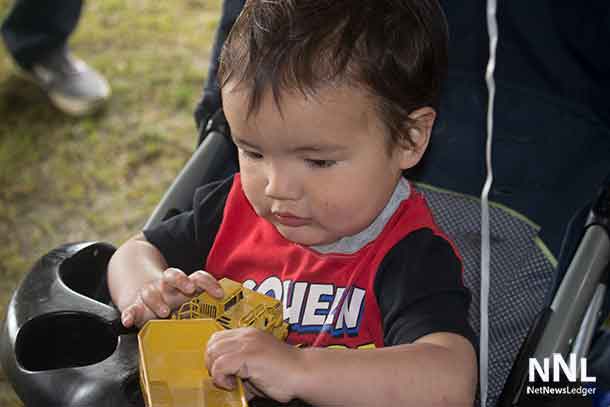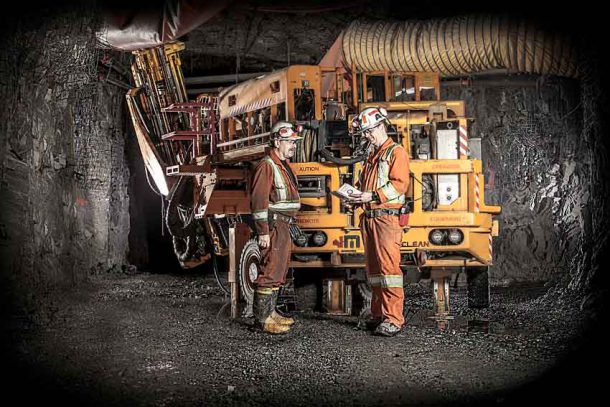A Surge in Mining Activities
THUNDER BAY – BUSINESS – Northern Ontario’s mining industry in 2024 is witnessing a significant upswing. The region’s rich deposits of gold, copper, and nickel are attracting increased exploration and expansion from both established and emerging mining companies. This growth is being fuelled by robust global demand and favourable market conditions.
While their are challenges, including that the global mineral market can be volatile, and that building working relationships with Indigenous communities is far more important today than ever before, the opportunities are still present.
Leading the Charge with AI Technology
Several key players in the mining industry are leveraging AI and advanced technologies to revolutionize their operations:
- Vale: Known for predictive maintenance and safety monitoring through AI.
- Barrick Gold Corporation: Utilizing AI for enhanced exploration and operational efficiency.
- Agnico Eagle Mines Limited: Integrating AI for mineral exploration and process optimization.
- Newmont Corporation: Investing in AI for exploration and production activities.
- Kirkland Lake Gold: Employing AI in mine planning and maintenance.
The integration of Artificial Intelligence (AI) in the mining industry is not just a trend, but a fundamental shift that heralds the future of mining operations. AI’s role in mining encompasses a wide array of applications, from predictive maintenance of equipment to optimizing resource extraction processes.
The use of AI in geological data analysis allows for more accurate and efficient identification of mineral deposits, significantly reducing the time and cost associated with exploration. Furthermore, AI-powered automation in mining operations enhances safety by reducing the need for human presence in hazardous mining environments.
As such, AI is rapidly becoming an indispensable tool for increasing efficiency, reducing costs, and improving safety in the mining industry.
Looking forward, the synergy between mining and AI is poised to drive industry-wide transformation. AI’s capability to process and analyze vast amounts of data can lead to the discovery of new mining prospects and more sustainable extraction methods.
This evolution is crucial in an era where environmental considerations are paramount and resources need to be extracted with minimal impact. Additionally, AI’s predictive analytics can aid in assessing and managing environmental risks associated with mining activities.
The industry’s future success hinges on its ability to adapt and integrate these technological advancements, ensuring that mining remains economically viable, environmentally responsible, and safe.
Building Lasting and Meaningful Relationships with Indigenous Communities
Mining companies today must work with Indigenous communities and leadership to create mutually beneficial opportunities through several key strategies:
- Engaging in Early and Ongoing Dialogue: Establishing open, respectful, and continuous communication with Indigenous communities from the earliest stages of a mining project is crucial. This involves not just informing communities about planned activities, but actively listening to their concerns, aspirations, and suggestions.
- Understanding and Respecting Cultural Values: Companies should make efforts to understand the cultural, spiritual, and historical significance of the land and resources they intend to use. Respecting these values in their operations is essential for building trust and cooperation.
- Community Consent and Participation: Seeking and obtaining free, prior, and informed consent (FPIC) is a key principle in working with Indigenous communities. This includes ensuring that communities are fully informed and voluntarily agree to the mining projects without any coercion.
- Developing Partnership Agreements: Formal agreements, such as Impact and Benefit Agreements (IBAs), can outline how benefits from the mining project will be shared. These agreements can include provisions for employment opportunities, training, environmental protection, and financial compensation.
- Local Employment and Business Opportunities: Prioritizing the hiring of local Indigenous people and contracting with Indigenous-owned businesses can help ensure that economic benefits are shared. Training and skill development initiatives can also be valuable.
- Environmental Protection and Sustainable Practices: Collaborating with Indigenous communities in environmental monitoring and adopting sustainable mining practices helps to protect the land and resources that are important to these communities.
- Community Development and Investment: Investing in community development projects, such as education, healthcare, infrastructure, and other local initiatives, can contribute positively to the quality of life in Indigenous communities.
- Ensuring Transparency and Accountability: Regular reporting and open lines of communication about the progress and impacts of mining activities help maintain trust and address any concerns promptly.
- Long-term Commitment: Building a relationship with Indigenous communities is a long-term commitment. It involves ongoing engagement and responsiveness to the evolving needs and concerns of these communities over the life of the mining project and beyond.
- Cultural Sensitivity Training for Employees: Providing training for employees on Indigenous cultures and histories can foster mutual respect and understanding, and contribute to a more inclusive and harmonious working environment.
Amidst this technological revolution, there’s a strong focus on environmental sustainability. Mining companies are increasingly adopting green practices, like using renewable energy and electric mining vehicles. Efforts to rehabilitate mining sites post-extraction are crucial in preserving the natural landscape.
The mining industry, traditionally known for its significant environmental footprint, faces the critical challenge of transitioning towards net carbon neutrality. This goal necessitates a holistic approach, beginning with the adoption of renewable energy sources. Mines can significantly reduce their carbon emissions by shifting from fossil fuels to solar, wind, and hydroelectric power for their operations. Additionally, the electrification of mining equipment and vehicles represents a major opportunity to cut down on greenhouse gas emissions. This shift not only reduces reliance on diesel but also improves air quality and reduces noise pollution in and around mining sites. However, the transition to renewable energy and electric machinery requires substantial investment and strategic planning, making collaboration with governments and energy providers essential.
Another pivotal aspect of achieving carbon neutrality in mining is enhancing operational efficiency. By leveraging advanced technologies such as AI and machine learning, mining companies can optimize resource extraction, reduce waste, and minimize energy consumption. Implementing precision mining techniques can ensure that only the necessary amount of material is extracted and processed, thereby reducing the environmental impact. Additionally, the industry must focus on developing and utilizing low-carbon and carbon-neutral materials in its operations. This includes researching and investing in alternative building materials, eco-friendly chemicals, and processes that have a lower carbon footprint. Research and development in these areas are crucial to finding viable, sustainable solutions that don’t compromise operational efficiency.
Finally, carbon offsetting and sequestration play a crucial role in the mining sector’s path to carbon neutrality. While reducing emissions is paramount, it’s equally important to invest in carbon offset initiatives, such as reforestation or conservation projects, which can balance out the unavoidable emissions.
Furthermore, exploring and investing in carbon capture and storage (CCS) technologies can mitigate the impact of residual emissions. Engaging in reclamation and land rehabilitation projects post-mining operations also contributes to carbon sequestration and biodiversity conservation. For long-term success, the mining industry needs to adopt a multi-faceted strategy that involves reducing emissions, enhancing efficiency, and actively participating in environmental restoration. Such comprehensive efforts are essential for the mining industry to align with global climate goals and achieve a sustainable, net carbon-neutral future.
The Economic Ripple Effect in Local Communities
The boom in the mining sector is also boosting the local economy in Northern Ontario. It’s creating job opportunities, supporting local businesses, and fostering infrastructure development. The growth also emphasizes inclusive benefits for local communities, especially Indigenous groups, through partnerships and shared resource agreements.
The Road Ahead for Northern Ontario’s Mining
Looking forward, Northern Ontario’s mining sector is poised for continued growth and innovation. With ongoing investments in AI and a commitment to sustainable practices, the region is set to remain a key player in the global mining landscape. This evolution promises economic benefits for the area while upholding a commitment to environmental stewardship.








